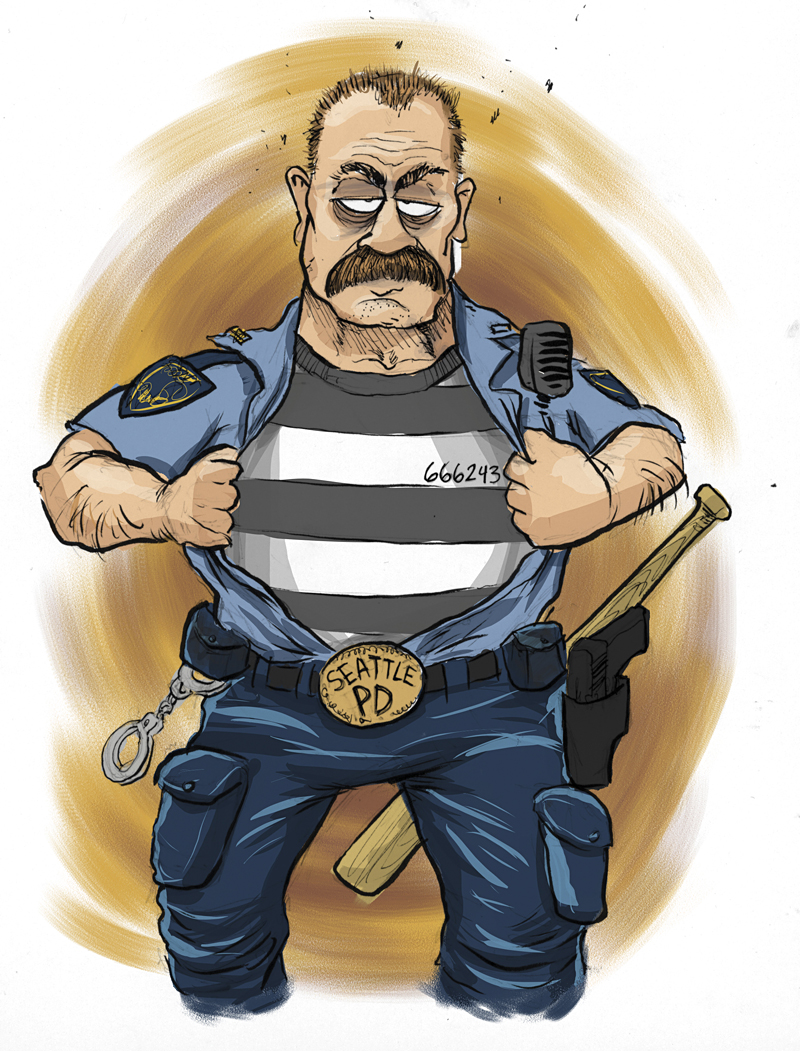Last week, a story published by the Associated Press about grievances filed against Jayme Biendl, the corrections officer strangled to death by inmate Byron Scherf in January, was picked up by numerous media outlets like KOMO News, The Seattle Times, and The Spokesman-Review. The story referenced the numerous complaints made by inmates at the Monroe Correctional Facility where Biendl worked—the implication being that, while no one deserves the fate that befell her, she was an unpopular guard, and it’s therefore no surprise she was killed.
The problem with this premise—besides the fact that it has nothing to do with the real reason Scherf attacked Biendl: She was alone and unarmed, and therefore an easy target for a cold-blooded killer—is that it’s simply not true.
According to Monroe Correctional Complex Superintendent Scott Frakes, Biendl, who when she was killed was alone in the prison chapel where she worked, had a “lower than average” number of complaints for someone in her position. And according to Scherf’s own statements, his reason for murder was frustration with the facility’s entire staff, not just her.
Responding to a Seattle Weekly public-records request, the DOC provided all the grievances filed by inmates against Biendl. Most stemmed from inmates angry that she had barred them from attending certain worship services because they had not signed up properly to attend, had already recently attended other services, or didn’t have all the proper documentation required to attend certain events at the prison chapel.
Inmates filed a total of 14 grievances against her from July 2005 to January 2011. All were eventually dismissed, and Biendl was found not to have acted improperly. Which means that, by all accounts, she was a stickler for the rules, but hardly unfair.
Yet that didn’t stop the Times, the Spokesman, KING 5, and others from running the AP piece nearly verbatim on their websites, leading with a breathless report about inmate Anthony Snow’s assertion that Biendl should be “re-educated in the sensitivity of the area she oversees” for covering a Wiccan symbol with a blanket before a Christian service. The story ticked off one grievance after another, only once acknowledging that Scherf never filed a grievance against his future victim, and never mentioning that he told investigators that the reason he strangled her was because “he had nothing to lose” and felt that “the staff would change their attitudes if a body showed up.”
To be sure, examining Biendl’s grievances via a public-records request is worth doing. And this examination would have resulted in a story worth telling if the number of complaints Biendl had received was somehow out of the ordinary; or if Scherf had filed a complaint before he killed her; or if any of the complaints had been upheld and Biendl had been disciplined.
But none of those things happened. So the AP was left with a story that seemed to say an innocent woman shared responsibility for her own death. Which raises the question: Why write it?
Traci Carl, the AP’s West Editor, naturally disagrees with the assessment that the story implicates Biendl, pointing to a line that she says explains why it was written: “The grievances were universally determined to be unfounded, but they help shed light on the pressures of working inside the walls of the state’s prisons, even in a place as relatively serene as the chapel.”
True enough. But shedding light on working conditions is one thing. Ticking off every unfounded complaint that inmates filed about a dead corrections officer is another. And Carl’s explanation is betrayed by the AP’s own headline, which wasn’t something benign like “Grievances shed light on pressures of prison work,” but the far more accusatory “Inmates had filed grievances against slain Monroe Correctional guard.”





